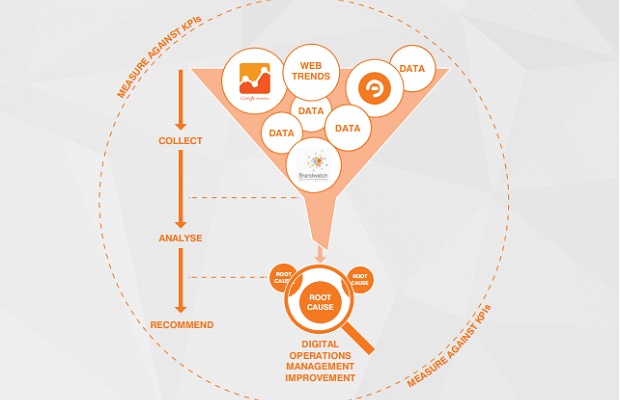There is a growing gap between the growth of digital operations and the frameworks put in place to manage them. This new whitepaper from Amaze outlines the key elements for success to create order from digital chaos.
The white paper, ‘Driving competitive advantage through efficient digital operations management’ identifies how businesses can more efficiently manage their digital estates to increase competitiveness and ultimately improve customer experience in a fast paced digital economy.
The white paper examines the gap between the growth of digital operations and the frameworks put in place to manage them.
This has been highlighted by recent research, which revealed that only 10% of organisations with a very centralised decision making process in digital report a ‘strong, shared sense of purpose and identity’, whereas 50% of organisations with a distributed decision making process report a ‘strong, shared sense of purpose and identity’.
The white paper also explores the dangers poor digital operations management can expose organisations to, highlights that digital operations management is not only possible, but vital, and outlines the key elements for success to create order from digital chaos.
The four steps to success in a digital management journey are summarised as follows:
1. Digital operations maturity – how ready are you?
The first step in any digital operations management framework should be to measure an organisation’s capability to manage its digital footprint.
There is no escaping the fact that the maturity of a business’ digital operation matters, regardless of industry or size, and implementing a continuous means of monitoring and improving the capabilities of an organisation to manage its digital estate is vital.
2. Digital governance – turning data into meaningful intelligence
Digital governance is not just about who has the authority to add and remove content to websites and social media accounts and having a chain of command in place to ensure no unauthorised activity takes place. Though this is key, having a roadmap that clearly defines roles and responsibilities for managing a digital presence is only one point in the triangle of governance.
3. Becoming ‘data detectives’ to drive operational change in digital management
Evaluating and reporting on digital operations management KPIs to highlight areas for improvement and inform future optimisation of the digital estate and its operation is, by majority, an untapped area that can give insights and help gain competitive advantage.
4. Tailored training – context not content
The final piece in the digital operations management puzzle, and key to ensuring that processes are continuously monitored and improving, is implementing structured training.
Commenting on the white paper’s insights, Amanda Follit, head of digital operations services at Amaze, says: “At Amaze we firmly believe that organisations are standing on the threshold of a new era in maximizing efficiency through digital operations management and driving even better customer experience through digital effectiveness. Improving digital operations management is absolutely vital to this and understanding how a brand’s web presence is being managed is not only possible, it is necessary for success.
“A shift in perspective is needed from businesses, looking at digital operations management.
Those organisations that understand the efficiencies of digital operations management as a key tool in their arsenal will gain significant advantage over those don’t.”
To download the white paper click here.

